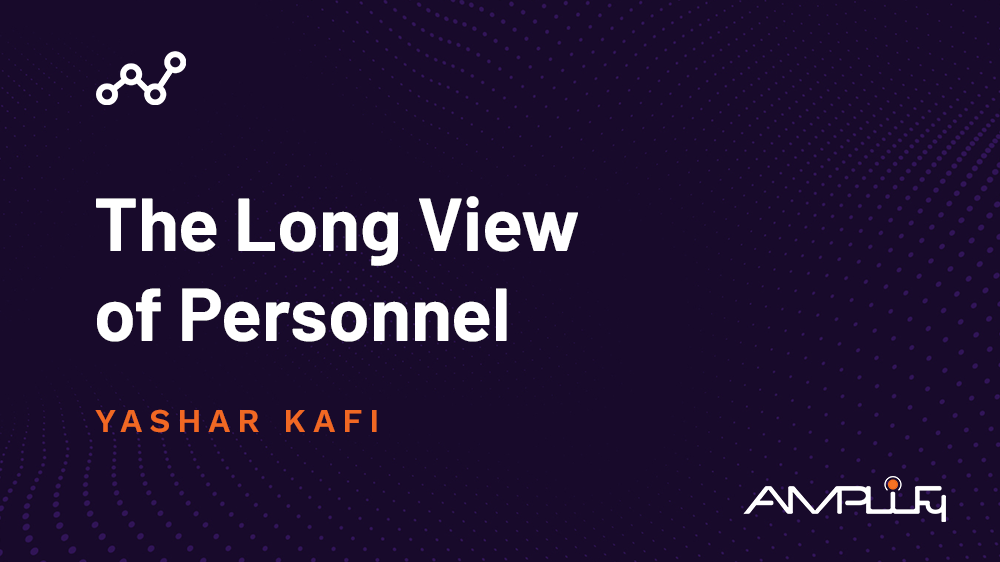The Long View of Personnel
In 1992, recently ousted from Apple,
Steve Jobs gave a talk on MIT’s campus wherein he was asked what the most important lesson he learned. His now-famous response was: “I now take a longer-term view on people. In other words, when I see something not being done right, my first reaction isn’t to fix it. It's to say: we’re building a team here.” The message here is simple. When building an organization, it is not your job to hyper-fixate on every single detail. Instead, what you need is a long-term approach.
Many organizations take a short-term approach to people because that is where their incentives lie. In the day-to-day trenches of business, value often swings in opposite directions: the hero one day can be the scapegoat the next. When it comes to turning profit, faster is usually seen as better because that’s what promotes viability. But real viability is found in the sustainability of your organization. Taking a boom-or-bust approach does not improve the positioning of your organization. Rather, it drives you away from your mission and influences your leadership to care about the wrong things.
If you want to build not only a successful team but a sustainable one, you must work from a long-term approach. It is easy, after all, when observing something going wrong to step in and fix it. But all you have done is create an environment wherein
you are the one responsible for solving mistakes. This does not mean that you should never solve problems; instead, it means that you need to weigh the long-term vision of your organization with short-term benefit and ask yourself which is more important.
One reason you should take a step back is because having the freedom to fail on our own is one critical way in which we learn. Not only do we figure out what does not work for us, but we simultaneously open
new pathways for creativity and innovation. This is often why the most innovative organizations are the ones with long-term approaches. Now, this approach can put some organizations on edge, as it appears at first glance like you are promoting failure. However, this is far from the case.
Facilitating failure does not merely mean allowing your employees to fail. Failing without a safety net can lead to damage to both your organization and the confidence of your people. Instead, you want to
coach your team through failure: when have you experienced a similar setback and what could you have done to mitigate it? Your employees will not necessarily respond to their failure the same way you did, but you might give them the confidence they need to think through their problems in a new light. Ultimately, you’re building trust in them that you have their back and are there to help them in difficult times.
I would regret not mentioning that leadership also needs to be treated with a long-term view in mind. However, this view must come from external partners who understand the needs of your organization and how leaders grow over time. Amplify’s value, for example, lies in our ability to provide expertise and objective insights tailored for the long haul. This not only allows you to optimize your operations, but it can give you the perspective you need to achieve sustainable growth and gain a competitive advantage. Your consultants are a part of the team you’re building, so make sure they’re the right ones.




